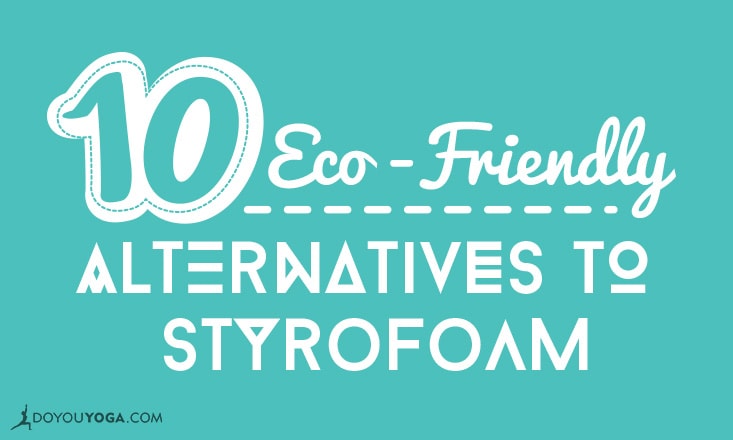Now that New York City has joined Seattle, Portland, and Washington D.C. in banning polystyrene foam—better known as Styrofoam—it looks like the iconic Styrofoam coffee cups and squeaky packing peanuts are going the way of the dinosaurs.
Why Do We Use Styrofoam?
Styrofoam has been a popular material since it was developed in the 1940’s because it’s cheap, lightweight, and disposable. Unfortunately, since Styrofoam is made from polymers, like plastic, this material never breaks down in the landfill.
This is a particularly big problem because research indicates that Styrofoam may be carcinogenic for humans. The good news is that there are plenty of options for cheap, lightweight materials that are better for your health and the environment.
Using eco-friendly products and packaging is all part of a bigger picture. Perhaps you’re introducing new, more mindful routines into your day. If that’s the case, you might be excited to try this free 30 Day Meditation Challenge. By sitting in meditation, you’ll learn about awareness and attention, which is ideal if you’re looking to expand your sustainable horizons.
Check out this list of alternatives to Styrofoam items to see what might someday be coming to a coffee shop or mailbox near you!
1. Mushroom Material
 Credit: Ecovative Design
Credit: Ecovative DesignThese materials are grown rather than made. No, seriously—they’re made from mushrooms! Agricultural waste is mixed with mushroom fungus to grow a fully sustainable packaging alternative.
2. Plantable Packaging
 Credit: UFP Technologies
Credit: UFP TechnologiesAre you dissatisfied with the plant-growing properties of your standard packaging materials? I mean, who isn’t, right? Seeds embedded in this fiber board can turn your next mail delivery into a cute window garden.
3. Edible Packing Peanuts
 Credit: Alligator Sunglasses
Credit: Alligator SunglassesPacking peanuts are even more fun when you can eat them. We can’t guarantee they’ll taste great, but since they’re made completely of cornstarch, you don’t have to worry if your pets decide to snack on them.
4. InCycle® Cups
 Credit: MicroGREEN, Inc.
Credit: MicroGREEN, Inc.MicroGREEN uses their unique technology to add carbon dioxide to recycled plastics, creating a lightweight, durable plastic that’s easier to recycle and reuse.
5. Bamboo Fiber Eco Bowl
 Credit: Nova68
Credit: Nova68Tom Dixon’s note to customers explains that these bowls are made from powdered bamboo fiber mixed with resin. The note says, “After a long functional life they could retire as a plant pot or simply be composted back to the earth.”
6. EarthAware™ Biodegradeable Packing Materials
 Credit: Epoch Times
Credit: Epoch TimesIt looks like a regular plastic air pouch, but EarthAware™’s packing materials are made with a special type of plastic that can biodegrade in just 5 years. That’s a lot quicker than Styrofoam’s biodegradation date, which is never.
7. EarthShell “Paper” Plates
 Credit: Epoch Times
Credit: Epoch TimesThere’s no paper at all in these disposable plates. Instead, rice, potatoes, and limestone could be the future of Central Park picnics.
8. Peat Plastic
 Credit: Giz Mag
Credit: Giz MagPeat is most often used to make gardening pots, Scottish whiskey, and weird smelling fires. But thanks to a Finnish research organization, this cheap and abundant resource can also be made into biodegradable cups and utensils.
9. ecotainer® Cups
 Credit: Biomass Packaging
Credit: Biomass PackagingMore than 90% of the Styrofoam in New York’s landfills came from food containers like plates, take-out boxes, and disposable cups. These cute ecotainer® cups, made from recycled plants and wood fibers, could easily fill that niche.
10. Loliware Edible Cups
 Credit: The Sustainable Leader
Credit: The Sustainable LeaderThese may not replace your standard “to-go” cup, but we can totally see New Yorkers loving this edible glassware. Made from plant gelatin, these vegan-friendly cups come in flavors that compliment your beverage. They’re also super eco-friendly—whether they break down in a landfill or in your belly.
What’s your favorite Styrofoam alternative? Let us know what you would consider using!


